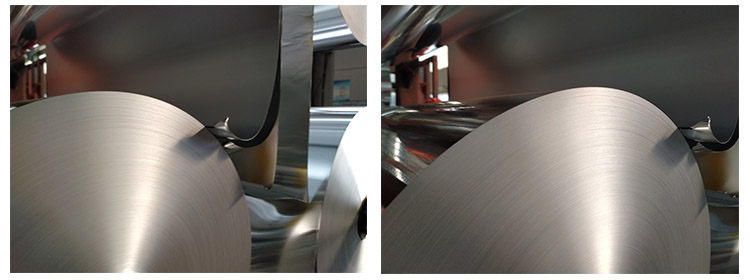 14 Micron Aluminum Foil For Food Use
14 Micron Aluminum Foil For Food Use
You can determine a lot of aluminum foil specifications for packaging products. However, we still receive inquiries from many companies who just want to match the old specification sheets that are currently available.
The tempering of the material is best described as the hardness or elasticity of the metal, or in our case the foil. The two extremes on the scale are simply marked as hard tempered foil or soft tempered foil.
So far, soft tempered foil is more common in packaging because it is more malleable of the two and is most suitable for tightly wrapping 3D products, such as a piece of chocolate or a piece of butter. Soft tempered foil is also the foil of choice for lamination.

On the other hand, hard tempered foil is most commonly used for harder packaging, such as blister or pill packaging. The blasting strength of hard tempered foil is relatively low, making it easier to push a single small object (such as a pill or battery) through the foil while keeping the rest of the structure intact. Large-volume soft tempered plain-weave packaging aluminum foil is well received by users
Once you have selected the temperature and specifications of the aluminum foil, you can fine-tune the characteristics of the packaging by changing its alloy. The change of the alloy will affect the tensile strength, elongation and burst strength.
The wettability of the foil determines the overall quality of the printing service that can be applied to that particular foil. The wettability of foil is divided into three common grades, all grades have different adhesion grades, and each side of the foil can have different grades. For example, the wettability grade of aluminum foil candy wrapping paper is generally A/B, and any high-level graphics are printed on the "A side" of the structure.
Soft Temper Jumbo Aluminum Foil Roll In commercial kitchens-restaurants, canteens, schools and hospitals-foil is a multifunctional tool





